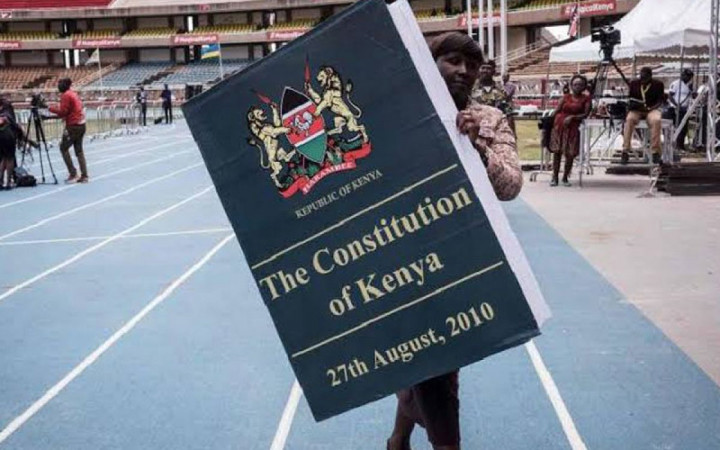Impunity, credibility in a constitutional battle
By Alberto.Leny, January 16, 2024The framers of the Constitution, 2010 concluded a remarkable marathon journey that produced a globally acclaimed document which has withstood the test of time, two decades later.
The sacred document was developed through a national countrywide people-led process that started in 1997. Constitution Review Commission of Kenya experts under the stewardship of an equally world-renowned constitutional expert, Prof Yash Pal Ghai, faced numerous obstacles before finally delivering ‘Katiba’.
Legal and political analysts at the time concluded that 2010 Constitution had met 80 per cent of its principal objective of sovereignty of the people and the expectations of the framers of the new Constitution.
Citizens jubilantly celebrated the birth of the new baby that promised a new dawn of freedom, unity and prosperity for a nation long tormented by authoritarianism, socio-economic exploitation and marginalisation.
The new Constitution was born after the spasms of difficult political labour pains and competing vested interests. It became apparent that the final constitutional document that Yash pal Ghai and his team had meticulously crafted had been tampered with.
Controversy, invective and violence marred the run-up to the first ever referendum in Kenya, in November 2005, to reject or ratify the new ‘mongrel’ draft constitution known as the Wako Draft developed after Ghai’s Bomas Draft that was thwarted by political interests.
Efforts to achieve consensus through the Naivasha Draft failed, leading to the Wako Draft and the referendum that pitted the ‘Yes’ or ‘Banana’ bloc led by then President Mwai Kibaki and the ‘No’ or ‘Orange’ bloc led by then Roads minister Raila Odinga.
In the vote, ‘No’ won with 58 per cent against ‘Yes’ with 42 percent dealing Kibaki a major political blow and a victory for Raila, who was subsequently sacked from the Cabinet alongside four other cabinet ministers who opposed the Wako Draft.
The impasse persisted in bitter acrimony with the disputed 2007 General Election pitting Raila and Kibaki that led to post-election violence after Raila claimed his victory was stolen.
As the national tottered on the brink of a catastrophe, internationally mediated talks managed to restore calm and stability and the formation of the Grand Coalition Government with Raila as Prime Minister.
The 2010 Constitution achieved consensus under this government of national unity. What were the key achievements (the 80 per cent) of the new constitution? The first was the entrenchment of the sovereignty of the people in the sacred document.
The second was decentralisation of power and resources from the centre to the grassroots – devolution. The third one, tied to the first two, relates to what was tampered with before its promulgation – parliamentary or presidential system of governance.
That is the 20 per cent that the splintered vested political interest agreed would be addressed “in due course”. A critical issue persisting to this date and at the centre of the raging debate triggered by President Ruto’s outrageous attack against the Judiciary – an independent arm of government.
It is a battle at the heart of the Constitution pitting impunity against credibility that has ignited fierce opposition across the nation. It is a battle the Executive is unlikely to win and has actually lost in the court of public opinion.
Furthermore, it has also exposed the Kenya Kwanza leadership to intense public scrutiny over the credibility of its policies, statements and actions on cost of living and taxation, with the “affordable” housing levy under a harsh spotlight.
— The writer comments on governance and constitutional affairs.
More Articles

